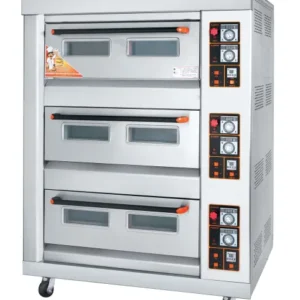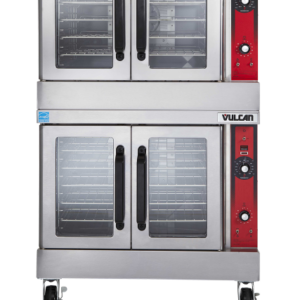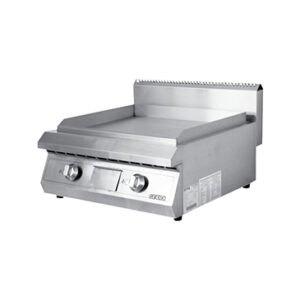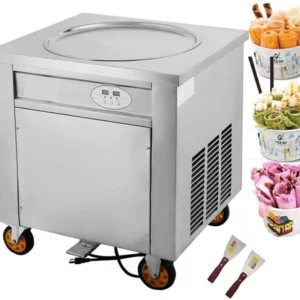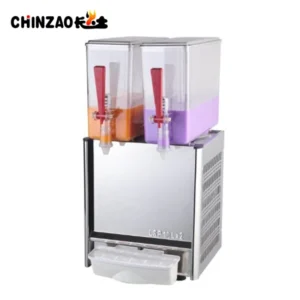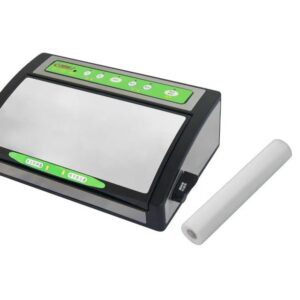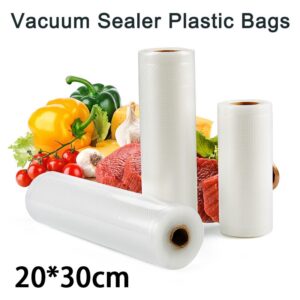Equipping Your Commercial Kitchen for Success in Nigeria

Introduction
Setting up a commercial kitchen in Nigeria is an exciting venture, but it comes with its own set of challenges and considerations. Whether you’re launching a new restaurant, bakery, or food business, the success of your operation hinges on having the right equipment and tools in your kitchen arsenal. In this comprehensive guide, we’ll explore the essential steps and key considerations for equipping your commercial kitchen for success in Nigeria.
From choosing the right appliances to optimizing workflow and ensuring food safety compliance, we’ll cover everything you need to know to set up a functional and efficient kitchen that meets the demands of the Nigerian culinary scene. Whether you’re a seasoned restaurateur or a budding entrepreneur, this guide is your roadmap to creating a thriving culinary enterprise in Nigeria.
So, roll up your sleeves and get ready to embark on the journey of equipping your commercial kitchen for success in Nigeria. Whether you’re serving up traditional Nigerian cuisine or international flavors, having the right equipment and tools is the first step towards culinary excellence and business prosperity.
Cooking Equipment
Gas Cookers with Ovens: A Versatile Option for Every Kitchen
Gas cookers with ovens combine the benefits of gas burners and a built-in oven. Gas cookers with ovens are a staple in commercial kitchens across Nigeria for good reason. They offer versatility, efficiency, and reliability, making them an indispensable tool for chefs and cooks. Here’s why gas cookers with ovens are a must-have in every commercial kitchen:
- Versatility: Gas cookers with ovens provide the flexibility to cook a wide range of dishes, from stews and soups to roasts and baked goods. The combination of stovetop burners and a built-in oven allows for seamless transition between cooking methods, making it ideal for multitasking in a busy kitchen.
- Even Heat Distribution: Gas ovens are known for their even heat distribution, ensuring consistent cooking results and uniform browning of baked goods. This makes them suitable for baking bread, cakes, pastries, and other delicate treats that require precise temperature control.
- Faster Cooking Times: Gas cookers heat up quickly, reducing waiting time and allowing for faster cooking and baking. This is especially beneficial in a commercial kitchen where speed and efficiency are paramount to keeping up with customer demand.
- Cost-Effective: Gas is a more affordable fuel source compared to electricity in Nigeria, making gas cookers with ovens a cost-effective choice for commercial kitchens. They help minimize operating costs without compromising on cooking performance.
Griddles and BBQ Grills: Perfect for Searing and Grilling
A Griddle is a giant, flat, smooth pan. It provides a uniform cooking surface ideal for foods that benefit from even heat distribution and contact cooking. Examples of food cooked on a griddle: Pancakes, burgers, fajitas, grilled cheese sandwiches, stir-fries.
A BBQ Grill is like a classic grill with raised grates as the cooking surface. These grates allow heat and smoke from the fuel source (charcoal, gas, or wood pellets) to directly interact with the food, creating that distinctive grilled flavor. It is perfect for Steaks, burgers, chicken, vegetables, seafood (anything that benefits from grilling).
Griddles and BBQ grills are essential cooking equipment for any commercial kitchen, offering the ability to sear, grill, and cook a variety of foods to perfection. Here’s why griddles and BBQ grills are perfect additions to your kitchen:
- Searing and Caramelization: Griddles and BBQ grills are ideal for achieving the coveted sear and caramelization on meats, seafood, and vegetables. The high heat and direct contact with the cooking surface create flavorful crusts and char marks that enhance the taste and appearance of dishes.
- Versatility: Griddles and BBQ grills can be used to cook a wide range of foods, including burgers, steaks, chicken, fish, vegetables, and more. They offer the flexibility to grill, sauté, fry, or even bake, making them versatile tools for creative cooking.
- Outdoor Cooking Experience: BBQ grills bring the outdoor cooking experience indoors, allowing chefs to recreate the smoky flavors and aromas of traditional barbecues. Whether it’s for grilling kebabs, smoking ribs, or charbroiling burgers, BBQ grills add depth and complexity to dishes that can’t be replicated with other cooking methods.
- Efficiency and Speed: Griddles and BBQ grills heat up quickly and cook food rapidly, making them efficient tools for high-volume kitchens. They help streamline cooking processes and reduce waiting times, allowing chefs to serve up delicious dishes to hungry customers without delay.
Food Service Essentials
Pressure Cookers: Efficient Cooking for Large Quantities
A pressure cooker is a sealed pot that uses steam pressure to cook food significantly faster than at normal pressure. Imagine a pot that traps steam, building up pressure inside and creating a hotter environment for cooking. This allows food to cook in a fraction of the time it would take in a regular pot. Pressure cookers are essential equipment in commercial kitchens, particularly for cooking large quantities of food quickly and efficiently.
Pressure cookers are essential equipment in commercial kitchens, particularly for cooking large quantities of food quickly and efficiently. Here’s a breakdown of how pressure cookers work:
Heat and Steam: As the pressure cooker heats up, the liquid inside (water, broth, etc.) boils, creating steam.
Increased Pressure: The sealed pot traps the steam, causing the pressure to rise.
Higher Boiling Point: With increased pressure, the boiling point of the liquid increases, allowing the food to cook at a higher temperature.
Faster Cooking: Due to the higher temperature, food cooks much faster than in a regular pot, saving you time and energy.
Here’s why pressure cookers are indispensable for commercial kitchens
- Time Efficiency: Pressure cookers use steam and high pressure to cook food rapidly, significantly reducing cooking times compared to traditional methods. This makes them ideal for preparing large batches of soups, stews, beans, and meats in a fraction of the time it would take with conventional cooking methods.
- Energy Efficiency: Pressure cookers consume less energy than conventional cooking appliances, helping to lower utility costs for food service establishments. Their efficient cooking process retains heat and moisture, requiring less energy to reach and maintain cooking temperatures.
- Retention of Nutrients: Pressure cooking preserves the nutritional content of food by minimizing nutrient loss during the cooking process. The sealed environment and shorter cooking times help retain vitamins, minerals, and flavors, resulting in healthier and more flavorful dishes.
- Versatility: Pressure cookers can be used to cook a wide variety of ingredients, including meats, grains, vegetables, legumes, and even desserts. They offer the flexibility to prepare diverse menus and accommodate different dietary preferences and restrictions.
Ice Makers: Keeping Your Drinks Cold
Ice makers are appliances or devices that automatically create ice cubes. Ice makers are essential for food commercial kitchens in Nigeria, ensuring that cold beverages are readily available to customers, especially in hot and humid weather.
They are typically found in two main forms:
- Built-in ice makers: These are integrated into refrigerators or freezers, automatically creating ice and storing it in a dedicated bin within the appliance.
- Stand-alone ice makers: These are freestanding appliances that solely focus on making ice. They are often used in commercial settings like restaurants, bars, or hospitals, but some portable versions are available for home use.
Here’s how ice makers work:
- Water Supply: The ice maker connects to a water line, typically the same one that supplies your refrigerator.
- Mold Filling: The water fills a mold with individual compartments, similar to an ice cube tray.
- Freezing: The mold is placed in contact with a refrigerant, causing the water to freeze into ice cubes.
- Ejection: Once frozen, the ice maker ejects the cubes from the mold into a storage bin or dispenses them through a chute (in some models).
- Refilling: The process repeats, continuously creating new ice cubes as needed.
Here’s why ice makers are indispensable for keeping drinks cold:
- Continuous Ice Production: Ice makers produce ice continuously, ensuring a steady supply of ice for cooling beverages throughout the day. This eliminates the need to purchase bagged ice and allows for greater control over ice quality and cleanliness.
- Convenience: Ice makers provide convenience and efficiency by automating the ice-making process. With the push of a button, operators can produce ice on demand, eliminating the need for manual ice tray filling and freezing.
- Hygiene and Safety: Ice makers produce ice in a sanitary and controlled environment, minimizing the risk of contamination and ensuring the safety of beverages served to customers. Automatic ice makers with built-in filtration systems further enhance water quality and ice purity.
- Versatility: Ice makers come in various sizes and configurations to suit different needs and space requirements. Whether it’s for a small café, a bustling restaurant, or a large-scale catering operation, there’s an ice maker available to meet the demands of any food service establishment.
Coffee Machines and Juice Extractors: Serving Up Beverages
A coffee machine, also known as a coffee maker, is an electrical appliance used for brewing coffee. It automates the process of extracting coffee’s flavor and aroma from coffee grounds, making it a convenient way to enjoy a cup of coffee at home or in an office setting.
Here’s a breakdown of how coffee machines work:
- Water Reservoir: Fresh water is added to a designated reservoir in the machine.
- Filter: Coffee grounds are placed in a filter, which allows water to pass through while capturing the coffee grounds.
- Heating Element: The water in the reservoir is heated by an internal heating element.
- Brewing Process: The hot water is then distributed over the coffee grounds in the filter, extracting the coffee’s flavor and aroma.
- Carafe: The brewed coffee collects in a carafe (a glass or thermal pot), ready for serving.
A juice extractor, also known as a juice press or slow juicer, is an electric kitchen appliance designed to extract juice from fruits, vegetables, and leafy greens. It differs from a blender in its ability to separate the extracted juice from the pulp (the solid fiber) of the produce.
Here’s a breakdown of How Juice extractor works:
- Preparation: Fruits and vegetables are cut into smaller pieces for easier processing.
- Feeding Chute: The pieces are fed into a feeding chute, which guides them into the extraction chamber.
- Crushing and Spinning: A rotating mechanism with sharp blades or a pressing mechanism crushes and grinds the produce.
- Juice Separation: The crushed material is then forced through a fine mesh filter, separating the extracted juice from the pulp.
- Collection: The juice flows into a separate container, while the pulp is typically discarded or composted.
Here’s why these beverage machines are essential for any commercial kitchen:
- Coffee Machines: Coffee machines allow operators to brew a variety of coffee beverages, including espresso, cappuccino, latte, and drip coffee. They offer consistency, convenience, and customization options, ensuring that every cup of coffee meets customer expectations.
- Juice Extractors: Juice extractors enable operators to produce fresh and nutritious fruit and vegetable juices on-demand. They extract juice from whole fruits and vegetables, preserving vitamins, minerals, and enzymes for maximum health benefits and flavor.
- Beverage Variety: Coffee machines and juice extractors expand beverage options for customers, catering to different tastes, preferences, and dietary needs. Whether it’s a refreshing fruit juice, a creamy latte, or a robust espresso, these machines allow food service establishments to offer a diverse selection of beverages to suit every palate.
Other Useful Equipment
Popcorn Machines: A Fun and Profitable Addition
Popcorn machines aren’t just for movie theaters and carnivals. They can be a delightful addition to your establishment, especially if you cater to families, events, or casual gatherings. Here’s why you should consider adding a popcorn machine to your kitchen:
- Profitable Snack Option: Popcorn has a high-profit margin, making it an excellent choice for boosting your revenue.
- Appeals to All Ages: Whether it’s a kids’ birthday party or a corporate event, everyone loves freshly popped popcorn.
- Easy to Operate: Modern popcorn machines are user-friendly and require minimal training for staff.
Waffle Makers and Chin Chin Cutters: Expanding Your Menu Options
Waffle Makers: Waffles are a popular breakfast and brunch item that appeals to both adults and children. A waffle maker allows you to offer a variety of waffle creations, from classic Belgian waffles to savory options like chicken and waffles or sweet treats like dessert waffles with fruit and whipped cream.
Chin Chin Cutters: Chin chin is a beloved Nigerian snack made from fried dough, often flavored with spices and sweeteners. A chin chin cutter streamlines the process of cutting dough into uniform shapes, saving time and ensuring consistency in size and texture. With a chin chin cutter, you can produce large quantities of chin chin efficiently to meet customer demand.
Sealing Machines and Vacuum Sealers: Preserving Food and Reducing Waste
A sealing machine is an appliance designed to create airtight seals on various food packaging materials like bags, pouches, trays, and tubes. It uses heat to melt a film or tape, effectively closing the container and preventing leaks.
- Ideal for packaging dry goods, snacks, and perishable items.
- Keep food fresh and prevent contamination.
- Google Snippet Tip: “Extend shelf life with our reliable sealing machines!”
Vacuum Sealers:
A vacuum sealer is an appliance that combines sealing with air removal to create a vacuum-sealed package. This process significantly extends shelf life and preserves the quality of food by minimizing air exposure.
- Remove air from bags, preventing freezer burn and spoilage.
- Perfect for marinating meats and sous-vide cooking.
Chafing Dishes: Adding Elegance and Practicality to Your Event Setup
A chafing dish is a type of serving dish used to keep food warm during buffet-style meals, catered events, or gatherings. It typically consists of a large metal or ceramic dish with a heating element underneath. The dish is placed over a frame or stand, which holds a fuel source, such as canned heat or Sterno, that provides a consistent heat source to keep the food warm.
Chafing dishes are commonly used to serve dishes like soups, stews, pasta, meats, and vegetables. They are especially popular for serving foods that are meant to be enjoyed hot over an extended period, such as during brunches, weddings, banquets, or other events where guests may serve themselves over time.
Chafing dishes come in various shapes, sizes, and designs to accommodate different types of food and presentation styles. Some may have multiple compartments or inserts to hold different dishes simultaneously, while others may have decorative elements to enhance the overall aesthetic of the serving table.
Overall, chafing dishes are essential tools for caterers, event planners, and hosts looking to maintain the temperature and quality of their food offerings while providing a convenient and elegant serving solution for their guests.
Selecting the Perfect Chafing Dish Set for Your Catering Needs:
- Choose from various sizes, materials, and designs.
- Ensure they match your overall theme and presentation.
Chafing Dish Etiquette: Best Practices for Serving and Presentation:
- Keep dishes at the right temperature using water pans and fuel.
- Arrange food attractively to entice guests.

